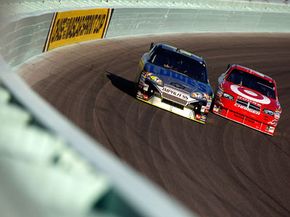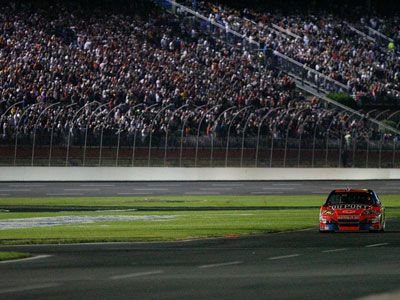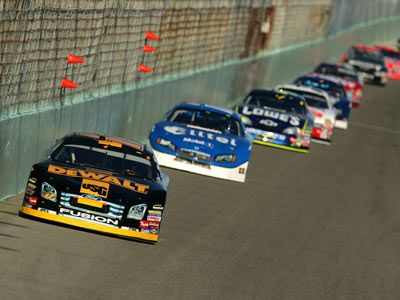Nobody really knows who in NASCAR first coined the term marbles, but it's a good bet whoever did so probably felt as if he'd just run over some during a race.
If you've ever watched a NASACAR race and heard broadcasters talk about a driver running over some marbles, they aren't talking about the small glass spheres children used to play with during the 1950s. What they're referring to are the small bits of rubber that come off tires and accumulate near the outside wall of a racetrack. On oval tracks in NASCAR's three premier circuits, the Craftsman Truck, Nationwide and Sprint Cup Series, walls act as barriers to keep these pieces of rubber from leaving the racing surface. Several factors make some tracks worse than others, but the effect remains the same: A car driving through the marbles slips and slides all over the place. You'd think rubber on rubber would be a good thing. After all, more rubber means more traction, right? Wrong. Goodyear Racing Eagles, the tires used exclusively in NASCAR's three series, are extremely sensitive and unsurprisingly lose grip when they're not in direct contact with asphalt or concrete.
Advertisement
Some tracks, like Tennessee's Bristol Motor Speedway, Delaware's Dover International Speedway and Darlington Raceway in South Carolina, are more conducive to tire wear due to the tracks' abrasiveness. All but two tracks, the road courses in Sonoma, Calif. and Watkins Glen, N.Y., are oval tracks and have outside walls that act as barriers to trap the marbles on the racing surface. Marbles are especially prevalent on tracks that only have one racing groove. It's most noticeable during yellow flag periods or caution laps when cars are weaving from side to side. This behavior may seem erratic, but drivers are simply cleaning off their tires.
Some race fans may think that these bits of rubber are called marbles because they're of similar size and shape. As convenient as that explanation might be, the truth is that drivers call them marbles because that's precisely what they feel like as they drive over them. On the next page we'll find out why marbles form, what tracks are known for having the worst marbles and what drivers do to avoid running over them. Believe it or not, races have been won and lost due to these seemingly harmless pieces of used tire.
Advertisement




